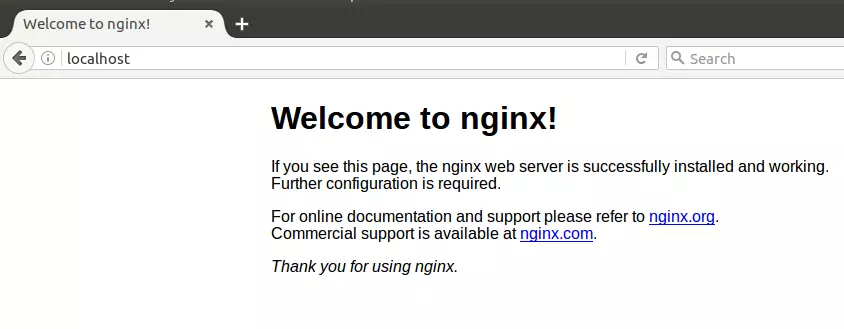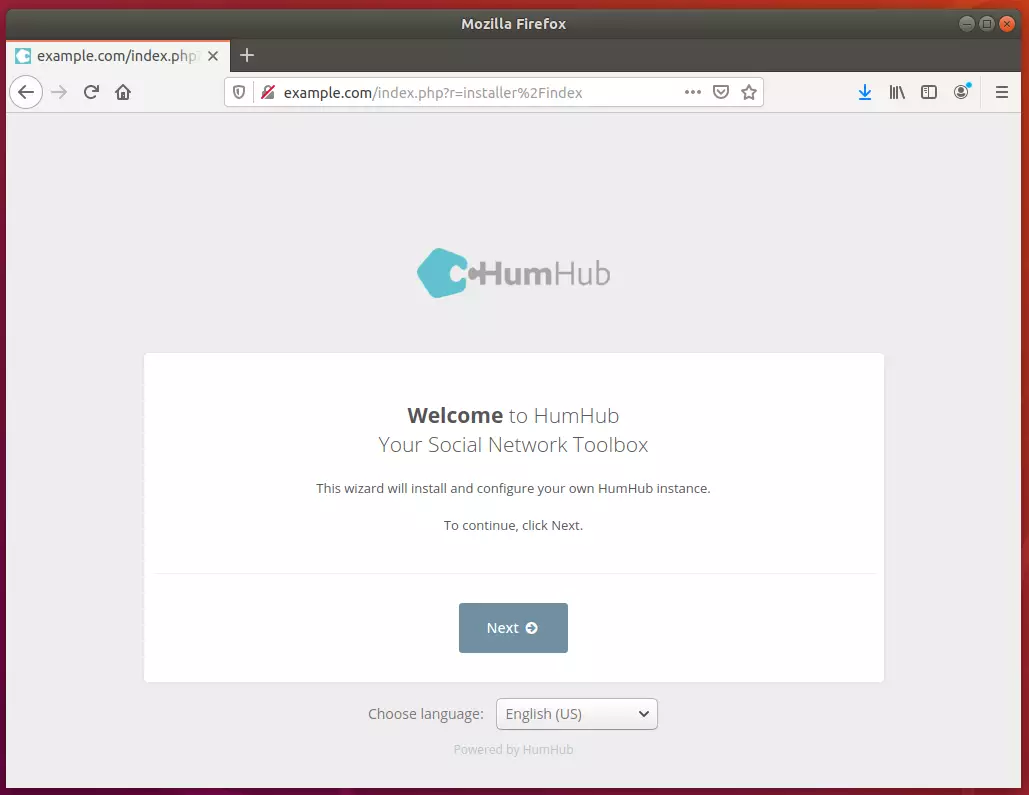This brief tutorial shows students and new users how to install HumHub on Ubuntu 18.04 | 16.04 with the Nginx HTTP server.
Our previous tutorial showed you how to install HumHub on Ubuntu with an Apache2 HTTP server. This one shows you how to set it up with Nginx instead.
HumHub is a free, flexible social networking engine that makes building and maintaining your websites for any purpose easy.
Its lightweight, powerful, and user-friendly backend will allow you to easily manage your users and security.
For more on HumHub’s social platform, please visit its home page
To get started with installing HumHub, follow the steps below:
Install Nginx HTTP
Nginx HTTP Server is the most popular web server. Install it since HumHub needs it.
To install Nginx HTTP on the Ubuntu server, run the commands below.
sudo apt update sudo apt install nginx
After installing Nginx, the commands below can be used to stop, start, and enable the Nginx service to always start up with the server boots.
sudo systemctl stop nginx.service sudo systemctl start nginx.service sudo systemctl enable nginx.service
To test the Nginx setup, open your browser and browse to the server hostname or IP address, and you should see the Nginx default test page as shown below. When you see that, then Nginx is working as expected.
http://localhost

Install MariaDB Database Server
HumHub also needs a database server to store its content. MariaDB database server is a great place to start when looking at open-source database servers to use with HumHub.
To install MariaDB, run the commands below.
sudo apt install mariadb-server mariadb-client
After installing MariaDB, the commands below can be used to stop, start, and enable the MariaDB service to always start up when the server boots.
Run these on Ubuntu
sudo systemctl stop mariadb.service sudo systemctl start mariadb.service sudo systemctl enable mariadb.service
After that, run the commands below to secure the MariaDB server by creating a root password and disallowing remote root access.
sudo mysql_secure_installation
When prompted, answer the questions below by following the guide.
- Enter current password for root (enter for none): Just press the Enter
- Set root password? [Y/n]: Y
- New password: Enter password
- Re-enter new password: Repeat password
- Remove anonymous users? [Y/n]: Y
- Disallow root login remotely? [Y/n]: Y
- Remove test database and access to it? [Y/n]: Y
- Reload privilege tables now? [Y/n]: Y
Restart MariaDB server
To test if MariaDB is installed, type the commands below to log on to the MariaDB server.
sudo mysql -u root -p
Then, type the password you created above to sign on. If successful, you should see a MariaDB welcome message.
Install PHP 7.2-FPM and Related Modules.
PHP 7.2-FPM may not be available in Ubuntu default repositories. To install it, you will have to get it from third-party repositories.
Run the commands below to add the below third party repository to upgrade to PHP 7.2-FPM
sudo apt-get install software-properties-common sudo add-apt-repository ppa:ondrej/php
Then update and upgrade to PHP 7.2-FPM
sudo apt update
Next, run the commands below to install PHP 7.2-FPM and related modules.
sudo apt install php7.2-fpm php7.2-common php7.2-gmp php7.2-curl php7.2-intl php7.2-mbstring php7.2-xmlrpc php7.2-mysql php7.2-gd php7.2-xml php7.2-cli php7.2-zip php7.2-sqlite
After installing PHP 7.2, run the commands below to open Nginx’s PHP default config file.
sudo nano /etc/php/7.2/fpm/php.ini
Then save the changes on the following lines below in the file. The value below is an ideal setting to apply in your environment.
file_uploads = On allow_url_fopen = On short_open_tag = On memory_limit = 256M cgi.fix_pathinfo = 0 upload_max_filesize = 100M max_execution_time = 360 max_input_vars = 1500 date.timezone = America/Chicago
After making the change above, save the file and closeout.
Create HumHub Database
Now that you’ve installed all the required packages, continue below to start configuring the servers. First, create a HumHub database.
Run the commands below to log on to MariaDB. When prompted for a password, type the root password you created above.
sudo mysql -u root -p
Then create a database called humhub
CREATE DATABASE humhub;
Create a database user called humhubuser with a new password
CREATE USER 'humhubuser'@'localhost' IDENTIFIED BY 'new_password_here';
Then grant the user full access to the humhub database.
GRANT ALL ON humhub.* TO 'humhubuser'@'localhost' WITH GRANT OPTION;
Finally, save your changes and exit.
FLUSH PRIVILEGES; EXIT;
After installing PHP and related modules, you must restart Nginx to reload PHP configurations.
To restart Nginx, run the commands below
sudo systemctl restart nginx.service
Download HumHub Latest Release
To download and install HumHub, visit its download page here.
Or use the commands below to download and install via the command line. At the time of this writing, the latest version is 1.3.20.
cd /tmp wget https://www.humhub.com/en/download/start?version=1.3.20 tar xvaf humhub-1.3.20.tar.gz sudo mv humhub-1.3.20 /var/www/humhub
Since you just ran the web server as root, you should ensure the www-data user and group own any newly created files.
To do that, run the commands below:
sudo chown -R www-data:www-data /var/www/humhub/ sudo chmod -R 755 /var/www/humhub/
Configure Nginx
Finally, configure the Apahce2 site configuration file for HumHub. This file will control how users access HumHub content. Run the commands below to create a new configuration file called humhub
sudo nano /etc/nginx/sites-available/humhub
Then copy and paste the content below into the file and save it. Replace the highlighted line with your own domain name and directory root location.
server {
listen 80;
listen [::]:80;
server_name example.com www.example.com;
root /var/www/humhub;
index index.php;
access_log /var/log/nginx/example.com.access.log;
error_log /var/log/nginx/example.com.error.log;
client_max_body_size 100M;
autoindex off;
location / {
try_files $uri $uri/ /index.php?$args;
}
location ~ \.php$ {
include snippets/fastcgi-php.conf;
fastcgi_pass unix:/var/run/php/php7.2-fpm.sock;
include fastcgi_params;
fastcgi_intercept_errors on;
}
}
Save the file and exit.
Enable the HumHub and Rewrite Module
After configuring the VirtualHost above, please enable it by running the commands below.
sudo ln -s /etc/nginx/sites-available/humhub /etc/nginx/sites-enabled/ sudo systemctl restart nginx.service
Then open your browser and browse to the server domain name or hostname. This is often localhost but can be a hostname or IP address. Your server admin or hosting company will have this information available.
http://example.com/
Continue with the installation wizard.

Next, validate that all requirements are met and continue.
Then type in the database name, username, and password and continue.

Next, choose the type of community you want to build and continue.

After that, create an admin account to manage the platform and complete the setup.

After installing, log in and start building your social networking site.

Conclusion:
You have learned to install HumHub on Ubuntu with the Nginx HTTP server. If you find any errors above, please leave a comment below.
Thanks,
You may also like the post below:

Leave a Reply